Multiomics of the intestine-liver-adipose axis in multiple studies unveils a consistent link of the gut microbiota and the antiviral response with systemic glucose metabolism
- PMID: 39358003
- PMCID: PMC11874369
- DOI: 10.1136/gutjnl-2024-332602
Multiomics of the intestine-liver-adipose axis in multiple studies unveils a consistent link of the gut microbiota and the antiviral response with systemic glucose metabolism
Abstract
Background: The microbiota is emerging as a key factor in the predisposition to insulin resistance and obesity.
Objective: To understand the interplay among gut microbiota and insulin sensitivity in multiple tissues.
Design: Integrative multiomics and multitissue approach across six studies, combining euglycaemic clamp measurements (used in four of the six studies) with other measurements of glucose metabolism and insulin resistance (glycated haemoglobin (HbA1c) and fasting glucose).
Results: Several genera and species from the Proteobacteria phylum were consistently negatively associated with insulin sensitivity in four studies (ADIPOINST, n=15; IRONMET, n=121, FLORINASH, n=67 and FLOROMIDIA, n=24). Transcriptomic analysis of the jejunum, ileum and colon revealed T cell-related signatures positively linked to insulin sensitivity. Proteobacteria in the ileum and colon were positively associated with HbA1c but negatively with the number of T cells. Jejunal deoxycholic acid was negatively associated with insulin sensitivity. Transcriptomics of subcutaneous adipose tissue (ADIPOMIT, n=740) and visceral adipose tissue (VAT) (ADIPOINST, n=29) revealed T cell-related signatures linked to HbA1c and insulin sensitivity, respectively. VAT Proteobacteria were negatively associated with insulin sensitivity. Multiomics and multitissue integration in the ADIPOINST and FLORINASH studies linked faecal Proteobacteria with jejunal and liver deoxycholic acid, as well as jejunal, VAT and liver transcriptomic signatures involved in the actin cytoskeleton, insulin and T cell signalling. Fasting glucose was consistently linked to interferon-induced genes and antiviral responses in the intestine and VAT. Studies in Drosophila melanogaster validated these human insulin sensitivity-associated changes.
Conclusion: These data provide comprehensive insights into the microbiome-gut-adipose-liver axis and its impact on systemic insulin action, suggesting potential therapeutic targets.Cite Now.
Keywords: INTESTINAL BACTERIA; LIVER; OBESITY.
© Author(s) (or their employer(s)) 2025. Re-use permitted under CC BY-NC. No commercial re-use. See rights and permissions. Published by BMJ Group.
Conflict of interest statement
Competing interests: None declared.
Figures

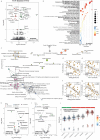
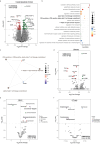

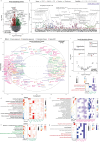
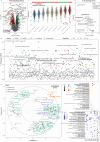
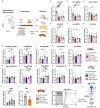
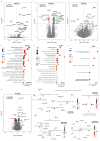

References
MeSH terms
Substances
LinkOut - more resources
Full Text Sources
Molecular Biology Databases
